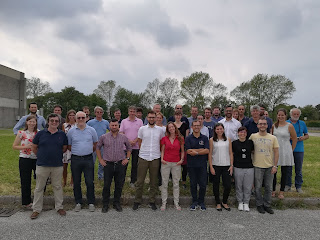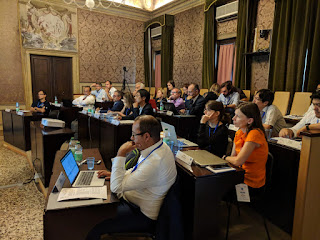On 13th and 14th February 2020, a workgroup meeting under the Interreg Italy-Austria ARMONIA project took place at the Gurk municipality in Kärnten Federal Region, involving SPRINT-Lab researchers together with project partners of Seismological Research Center, University of Trieste and Zamg (Zentralanstalt für Meteorologie und Geodynamik).
The objective of the ARMONIA project is the development of strategies for the management of emergencies on a cross-border level using innovative methodologies, aiming to tighten the collaboration between the civil protection institutes for risk prevention.
During the first day the workgroup carried out a quick ambient vibration testing in the Gurk town hall. This methodology has been developed by SPRINT-Lab researchers and it is finalized to the rapid characterization of the behavioural predisposition of the structure in case of seismic event. The methodology has been applied in strategic buildings of Friuli Venezia Giulia Region and of Veneto Region during the project.
An accelerometric station with strong motion sensor was installed during ARMONIA project at the Gurk town hall by ZAMG partner. This element made the municipality a candidate for the measures.
During the day the other partners of the
project proceeded to test the operating capability of low cost sensors compared
to high quality sensors.
On the next day SPRINT-Lab researchers showed the first results of ambient vibration recordings analysis. The data has been processed with specific algorithms developed by SPRINT-Lab researchers during the project. The discussion of the results with the other partners focused on the characterization of the structural dynamic behaviour of Gurk town hall.
The researchers of the SPRINT-Lab also explained in detail to Austrian colleagues the prototype of the “ARMONIAtlas”, an informative atlas consisting of specific thematic maps aimed at providing essential elements of information for civil protection operating rooms. During the ARMONIA command post exercise the Austrian colleagues was connected by video call.
The “ARMONIAtlas” allows to frame in real time the characteristics of a seismic event and to estimate the potential damage on buildings. This tool, still in a prototypal phase, will allow to promptly activate pre-codified procedures in support of the emergency.



































